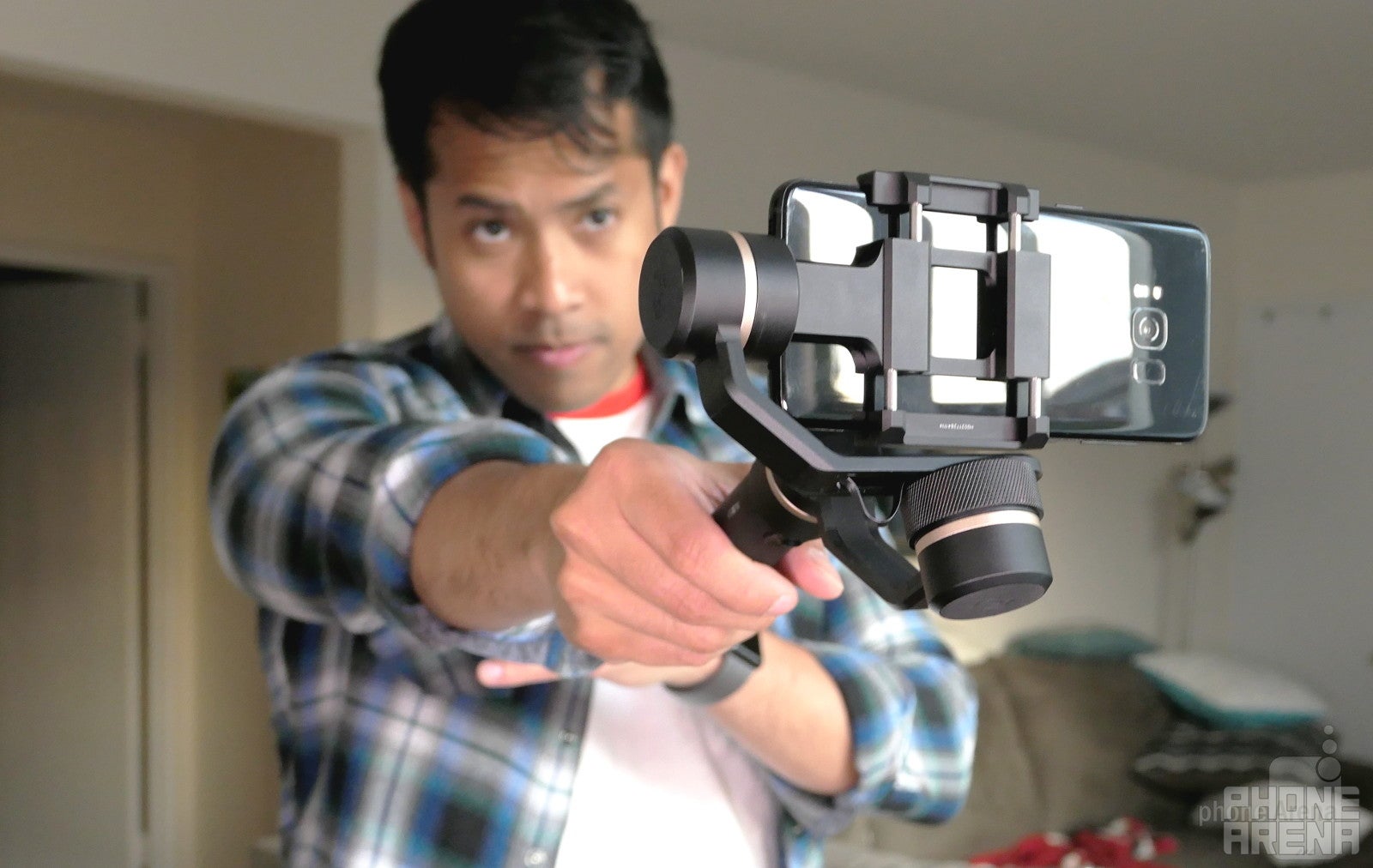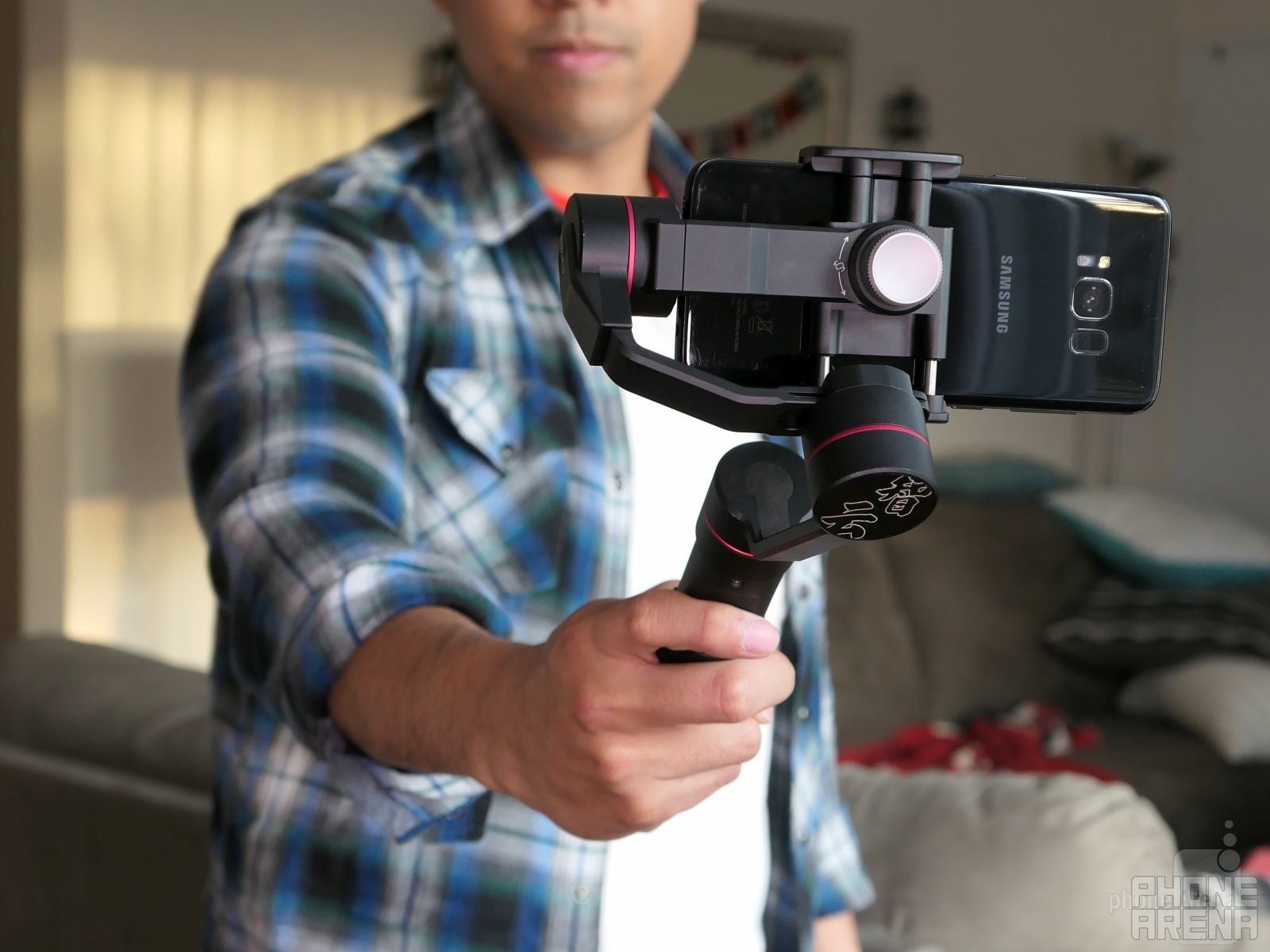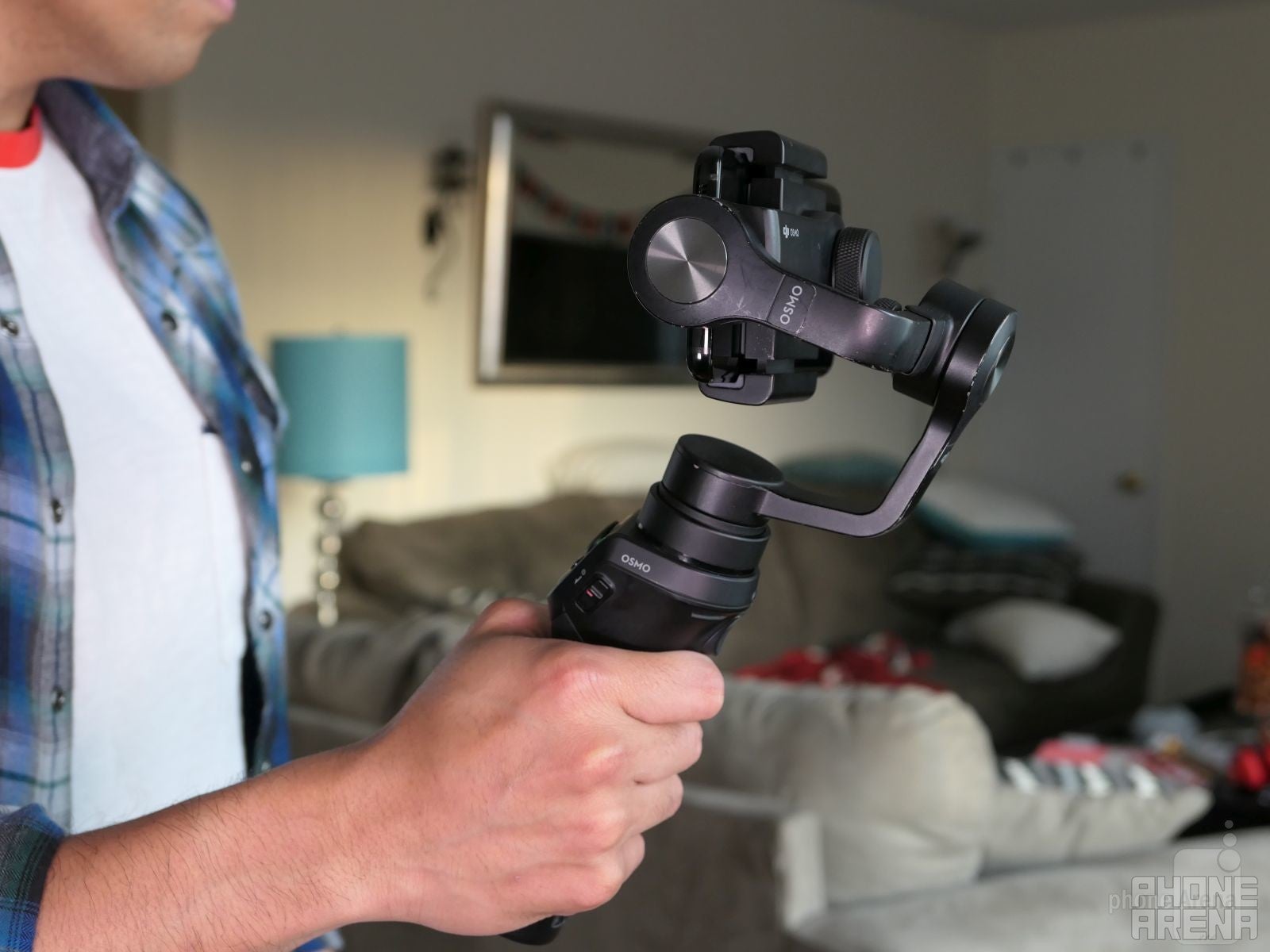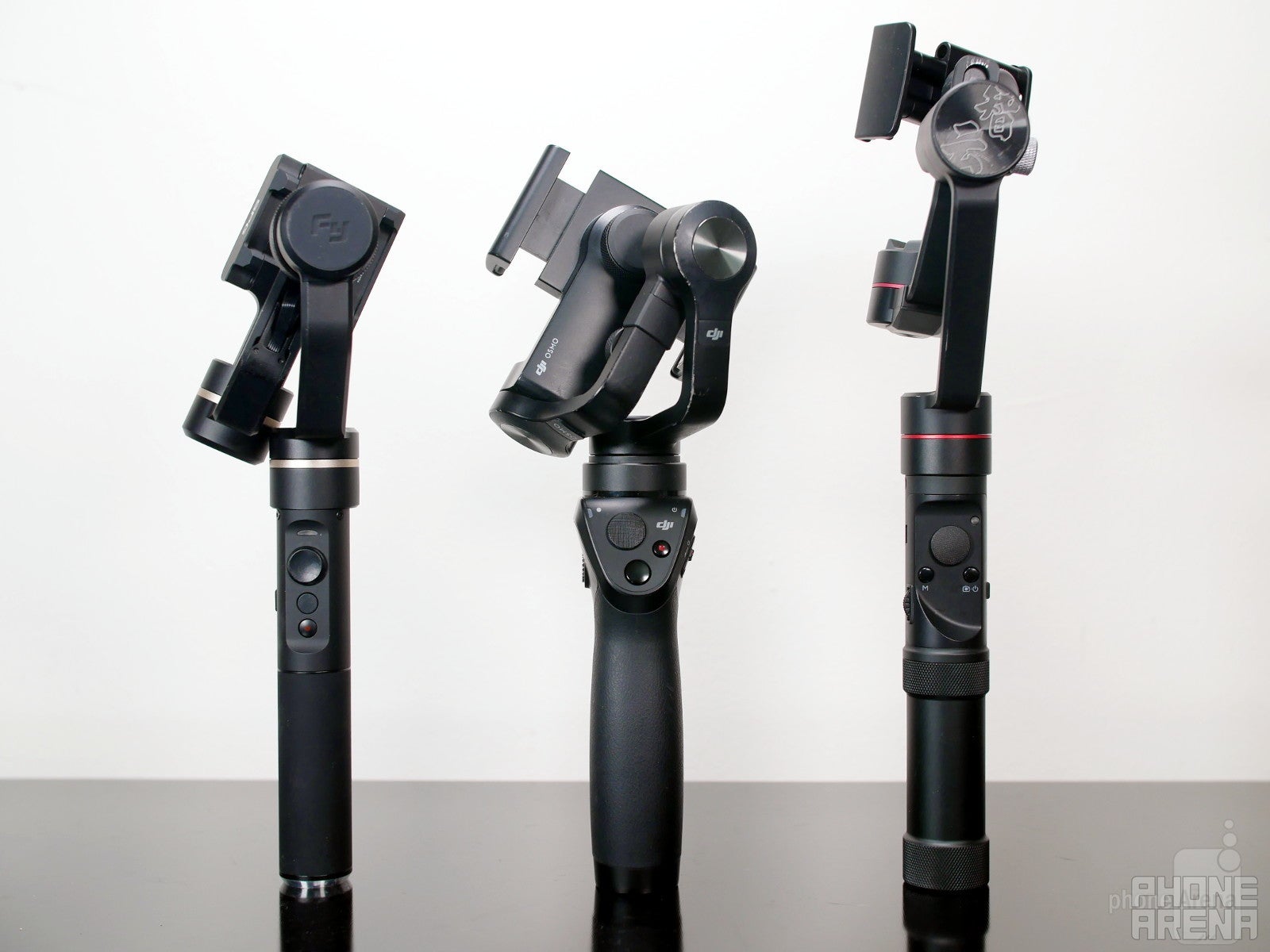DJI Osmo Mobile vs Feiyu-Tech SPG vs Zhiyun Smooth 3: smartphone gimbals

Optical image stabilization, OIS for short, has done wonders for smartphone cameras. Once regarded as a luxury amongst few camera-centric phones, it has gone on to become prevalent throughout the range. And nowadays, it's almost unfathomable for any high-end device to lack it – so it's just that commonplace, which is amazing to say the least.
They've proven their worth, obviously, as they've been able to stabilize otherwise shaky looking video footage that would almost certainly make them unusable for professional use. While OIS has been touted by some manufactures to deliver that "walking-on-air" look, it's still not without some flaws. That's probably why we've been seeing more and more of these handheld smartphone stabilizer gimbals in the last couple of years.
Smartphone gimbals takes stabilization to the next level, by truly delivering that "floating" like effect with almost all sorts of movements. Making them even more versatile, they're armed with a variety of stabilizing modes to really give smartphones more of that cinematic quality. Then again, there's a hefty cost associated in owning them, but they've shown how much better they are than just simply relying on the built-in OIS.
We've been taking a few smartphone gimbals for a spin recently, and thought it'd be a great idea to provide you some of our insights about them. For this comparison, we have the $300 DJI Osmo Mobile, $300 Zhiyun Smooth 3, and the $159 Feiyu-Tech SPG. Some of you might be wondering how the lower priced Feiyu-Tech SPG might compare against the other two more notable smartphone gimbals in the space, so we're going to pit the three together to find out exactly how they all stack up!
We've been taking a few smartphone gimbals for a spin recently, and thought it'd be a great idea to provide you some of our insights about them. For this comparison, we have the $300 DJI Osmo Mobile, $300 Zhiyun Smooth 3, and the $159 Feiyu-Tech SPG. Some of you might be wondering how the lower priced Feiyu-Tech SPG might compare against the other two more notable smartphone gimbals in the space, so we're going to pit the three together to find out exactly how they all stack up!

Feiyu-Tech SPG
Design
For the most part, all three follow the same basic design foundations of what makes up a smartphone gimbal stabilizer. But while they all follow the same principals for the most part, like their handles and adjustable counterbalances, there are pros and cons in how each of the three are designed.
Aesthetically speaking, the DJI Osmo Mobile seems like it's something from the cockpit a high-flying rocket powered aircraft – it looks amazing and feels superb, more ergonomic than the others. While we love its design the most, it lacks a ¼-inch mount on its underside that would users to attach it to a tripod, monopod, or even selfie stick of some kind for extension.
The Zhiyun Smooth 3 sports the most versatile design on the bunch, offering features like a sturdy aluminum frame, real-time charging of your device via the microUSB port on its arm, and more counter balance adjustments. Due to that aluminum frame, though, it's the heaviest of the three gimbals at 440 grams.
Basic, that's what best describes the Feiyu-Tech SPG. Even though it lacks the ergonomics of the DJI Osmo Mobile and substantial build quality of the Zhiyun Smooth 3, the SPG wins in being the most travel-friendly – thanks in part to its considerably compact size. In addition to the two ¼-inch mounts on its handle, which allows it to be attached vertically or horizontally, its design is the only one that's splash-proof.
Setup
Generally speaking, it's a breeze getting all three gimbals set up, just because it doesn't require a ton of fine adjustments that are usually necessary with standard camera gimbals. All that's needed is to attach the smartphone into their respective cradles, adjust the counterbalance so that they're level for the most part, and then proceed to turn them on. After that, the gimbals quickly calibrate themselves to so that the phones are level.

Zhiyun Smooth 3
Payload
From small, medium, to extra-large sized smartphones, these gimbals are more than generous in accommodating them all – including those wide ones. They're able to fasten pretty much most of the current flagships around, like the LG V30, Samsung Galaxy S8, and Apple iPhone 8 Plus. Accommodating these various sized smartphones might not be an issue with any of the gimbals, there's just so much payload they can support before failing.
That goes to the Zhiyun Smooth 3, which surprised us by being able to support the weight of the phone and all the accessories. Even though it offers the best payload support out of the bunch, we could tell that the motors were really straining to ensure that the entire thing was steady – so we wouldn't suggest trying to do this.
Modes
Gimbals have a unique look that sets them apart from handheld footage, you can tell based on its fluid movements. That's partly due to the various modes offered by them, and in this case, it's pretty much the same from all three gimbals. Specifically, they all break down to the following:
Panning mode: This is best used for following a subject without adjusting the pitch or roll, as the gimbals are able to pan left/right, but the pitch and role remain fixed. It's the default mode with the Zhiyun Smooth 3 and Feiyu-Tech SPG when you turn them on, but it's strangely absent with the DJI Osmo Mobile. In order to access this mode, you'll need to run the Osmo Mobile app and enable the "pitch lock."
Follow mode: In follow mode, the gimbals will adjust the pitch, roll, and panning accordingly to follow the direction you're pointing the gimbals at. This is especially useful when you're tracking something that's moving in random directions, since follow mode does a nice job in quickly adapting. This is the default mode for the DJI Osmo Mobile, while the other two gimbals require you to press their mode changing buttons to cycle to it.
Software
Feiyu-tech: It's as basic as they come, offering only the essentials when it comes to modes and settings. While there's an option to shoot at up to 4K Ultra HD resolution, there's barely any other manual controls at our disposal – just focus modes and adjusting the white balance, but that's it!
Zhiyun Smooth 3: Zhiyun's Play app offers the most well-rounded features and controls, offering video resolution up to 4K, in addition to manual controls for ISO, shutter speed, and much more. We prefer it the most, especially when it caters to diehard content creators who want as much control as possible with their compositions.
DJI Osmo Mobile: You'd think that DJI's app would be significantly more robust, but it's shockingly missing a couple of things that we feel are distracting. For starters, the app tops out at 1080p resolution with video recording, which is bizarre on its own. Furthermore, it lacks the depth of manual controls we get from Zhiyun's app, such as adjustment to the shutter speed and ISO. The only thing going for it is the fact that it's the only one to offer built-in live streaming to Facebook and YouTube.
Tracking
Manually operating the gimbals is a fun experience on its own, but if you're a one person show and require to be on camera, you'll find their tracking features indispensable. And you know what? They work rather well. Whether it's the front or rear cameras, you'll be able to place the gimbals upright, or on a mount of some kind, and they'll do the rest when it comes to automatically tracking.
With the DJI Osmo Mobile and Zhiyun Smooth 3, all that's needed is to press on the tracking button within their apps, select the subject by forming a box around it, and from there it'll automatically track. Unlike the other two gimbals, the Feiyu-Tech SPG only offers facial tracking. When it's enabled, it'll analyze the scene for a face and proceed to track it. Sure, it works and whatnot, but we wish it offered the same object tracking as the other two gimbals.
Stabilizing Performance
Investing in a smartphone gimbal really means one thing, you want the utmost best stabilization! That premise is the core function of each and every gimbal, which is the main reason why we dove into this comparison in the first place. In testing out each gimbal with the LG V30, we opted to standardize the process by disabling OIS with the phone, shooting 4K resolution at 30 FPS, and using the native camera app for shooting – rather than the ones provided by the companies with their apps.
Which is the best or smoothest you ask? That's a little bit tough to determine without taking into consideration the different kinds of movements we're apt to perform. While one might perform better for walking, another might be more suitable for going up/down stairs. Rather than proclaiming a single best gimbal when it comes to stabilization, let's break them down to the following categories below.

DJI Osmo Mobile
- Walking: Previewing the samples of each gimbal separately, one could assert that they all do the same fantastic job of stabilizing the phones for video recording. However, it becomes more apparent which ones are more superior when we compare their footage side-by-side. Walking normally, there's a slight bobbing motion that can be seen in the sample footage from the Feiyu-Tech SPG and Zhiyun Smooth 3, but it's subtle with the DJI Osmo Mobile.
- Climbing Stairs: This one is a cake walk for all three gimbals, wherein they exhibit the same level of steadiness as we ascend and descend stairs. Moving at a normal distance, it's clear that these gimbals no nicely to remain steady even as our feet hit each stair with a bit of force. However, if you're moving quickly through stairs, some jittering is evident with them. It's barely noticeable though.
- Running: Abrupt movement, such as running, can really test the performance of these gimbals, which they should given the kind of hasty movements they're trying to compensate for. Retaining that stabilized appearance is naturally tougher, but it's still significantly still better than just going handheld and relying on a phone's OIS. With all three gimbals, harsh jitters can be seen in the footage, but it's still more than usable.

Feiyu-Tech SPG, DJI Osmo Mobile, Zhiyun Smooth 3

Conclusion
Earlier we outlined the pricing of all three gimbals, something that plays deeply into their value. Both the DJI Osmo Mobile and Zhiyun Smooth 3 are priced at $300, which is a pretty significant investment to achieve that walking-on-air look. At $159, almost half the cost of its rivals, the Feiyu-Tech SPG offers the essentials without hitting you harshly in the bank. Whilst the savings is always wonderful, we also love it for its travel-friendly compact size, splash-proof construction, and versatile modes.
Lastly, the DJI Osmo Mobile features the most ergonomic design out of the bunch, making it unique amongst smartphone gimbals as a whole. It's fantastic at stabilizing footage while walking, having very little of that bobbing motion in the process. What's puzzling to us is that it lacks 4K capture through its apps, and it doesn't offer a standard ¼-inch mount on its underside like its competitors. Despite that, it's the only one to integrate live streaming via Facebook and YouTube.
Follow us on Google News











Things that are NOT allowed:
To help keep our community safe and free from spam, we apply temporary limits to newly created accounts: